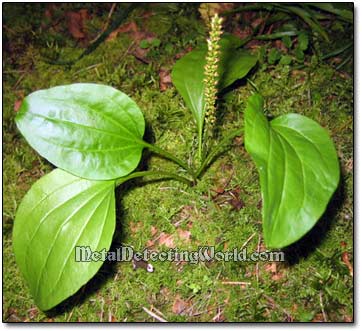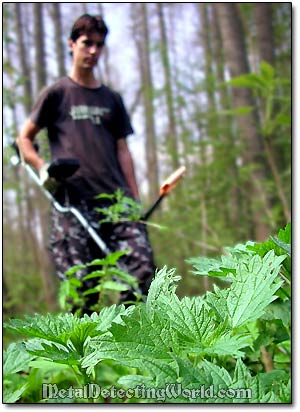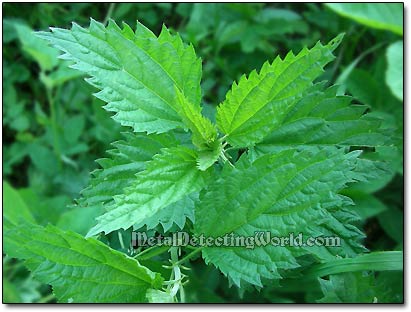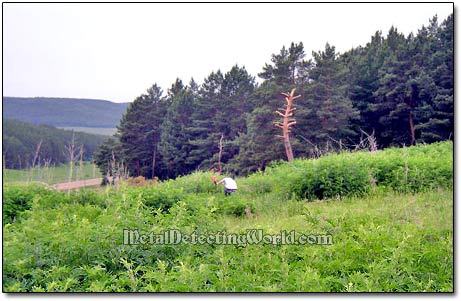Metal Detecting Research and Exploration - A Complete Guide, page 50
Footwork and Observation
ATYPICAL and INHERENT VEGETATION and PLANTS INDICATE FORMER HOMESTEAD SITES
(CONTINUED from Page 49)
Ribgrass (Plantago Lanceolata) also known by the common names ribwort plantain, English plantain, narrowleaf plantain and Old World plantain is a common weed of cultivated land. Ribwort plantain is considered to be an invasive weed and an indicator of not only grazing in the area, but also of pathways traveled by people.
Plantago Lanceolata is used frequently in herbal remedies for cleansing rashes, sores and wounds. If applied to the light wound such as a small knife cut or scratch, the wound will heal fast. Plantain leaves are also used in beverages such as teas.
Plantain Ribgrass Follows Every Pathway Used by Humans

The plant is a rosette-forming perennial herb, with leafless, silky, hairy flower stems (10-40 cm or 3.9-16 in). The basal leaves are lanceolate spreading or erect, scarcely-toothed with 3-5 strong parallel veins narrowed to short petiole. Grouping leaf stalk deeply furrowed, ending in an oblong inflorescence of many small flowers each with a pointed bract.
At last, it is worth of mentioning the best indicator of the former presence of human dwelling - the Stinging-Nettle perennial plant (Urtica Dioica), which grows at every spot where people used to live or just hang out for a long while. Because of this plant, spotting any site of a homestead or the whole settlement can be as easy as spotting the Moon.
Metal Detecting around Stinging-Nettle Plants

There are 30-45 species of stinging-nettle which is native to Europe, Africa, Asia, and North America and occupies only the areas of both past and present human residence. Urtica Dioica is a herbaceous plant, namely it has leaves and stems that die down at the end of the growing season to the soil level. Though the hairs on fresh leaves can cause painful stings and acute urticaria, these are rarely seriously harmful.
Stinging-Nettle Leaves

The stinging-nettle plants always form dense patches right around the house foundations (if they still exists at the sites undisturbed by plowing or else) or at the spots in the abandoned farm fields where the houses used to be in the past. That is why it is hard not to notice the former dwelling sites that are now occupied by stinging-nettles.
Patches of Flourishing Stinging-Nettles at Former Village Site

Stinging-nettles have been used in folk remedies and cooking. In fact, the nettle soup is my all-time favorite, and I always gather stinging-nettle leaves at the hunt sites in the early spring for cooking. Sometimes I gather and dry a substantial amount of nettle leaves so I could cook delicious soups during winter months. Stinging-nettles are rich with vitamin C, and as my grandmother once told me, the nettle soups helped millions of people survive the starvation during the years of World War II.